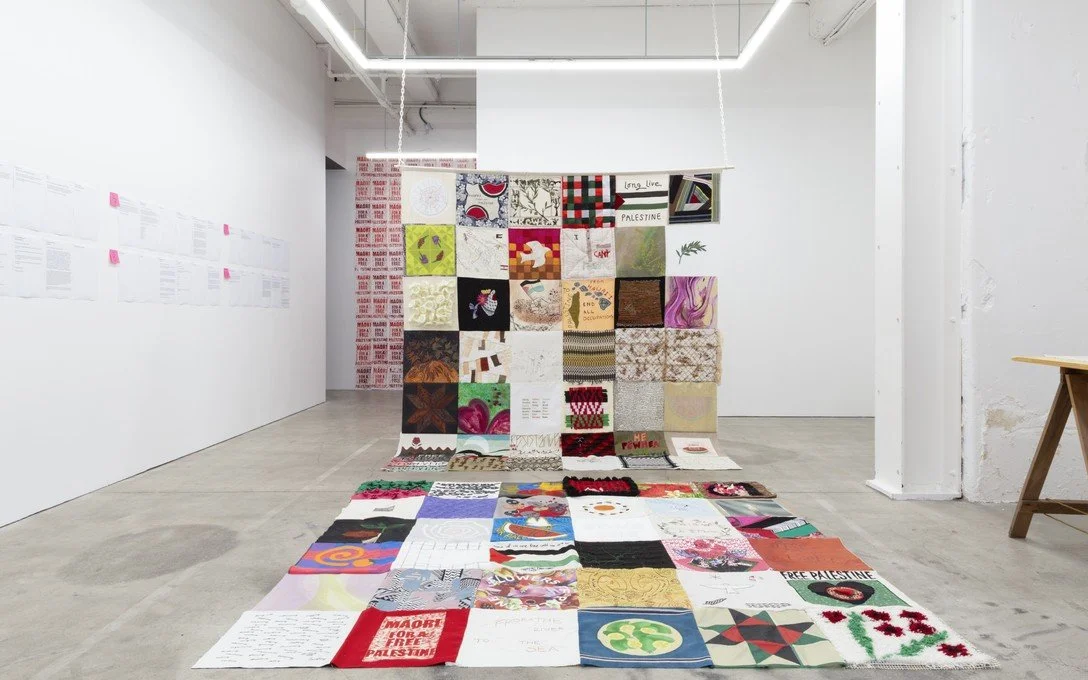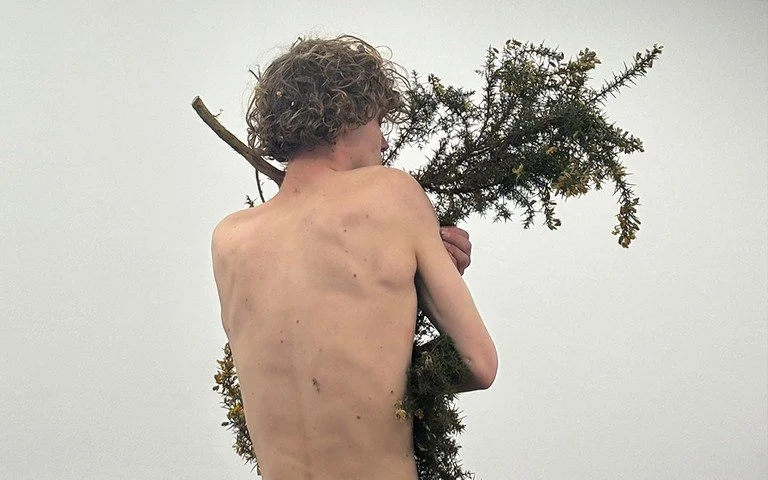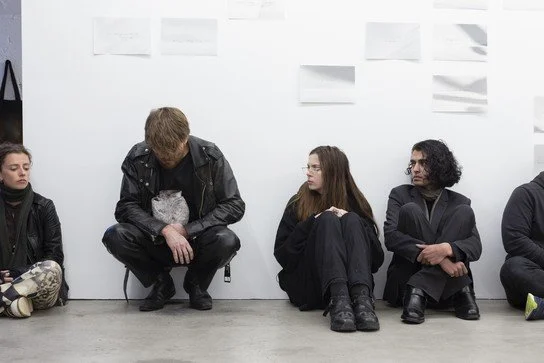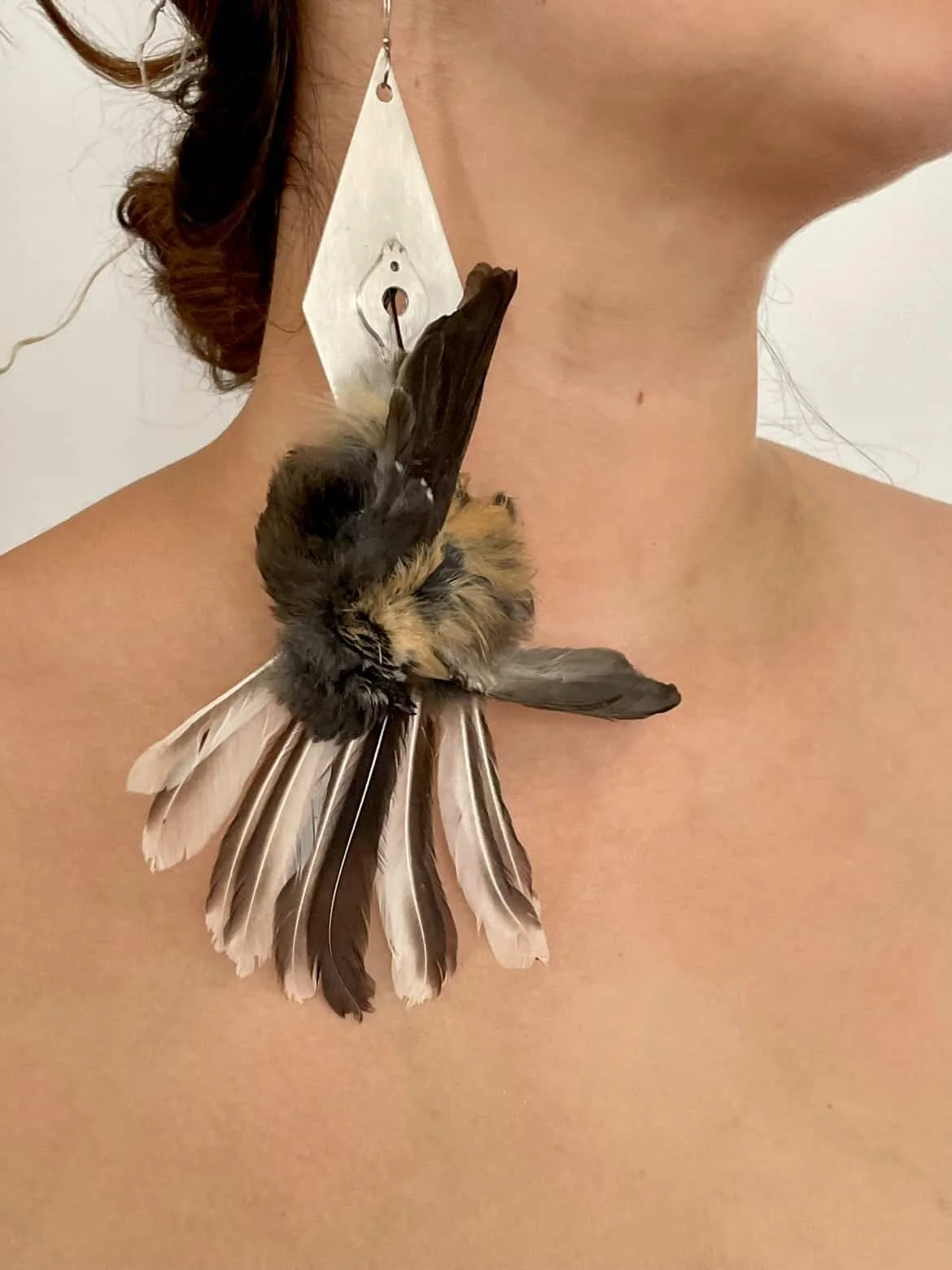DJCS’ Guide to Te Whanganui-a-Tara Wellington
Stitching Solidarity Artists for Palestine installation view at Enjoy Contemporary Art Space. Courtesy of Cheska Brown
DJCS is a curator, artist, researcher, director of Enjoy Contemporary Art Space in Pōneke, the center of Te Whanganui-a-Tara Wellington, Aotearoa New Zealand’s capital city, since 2022 and founder of their eponymous gallery.
DJCS’ exhibitions and art events challenge the status quo, employing queer theory, settler colonial studies and institutional critique to interrogate power structures within contemporary art institutions and their historical formations.
Examples of celebrated exhibitions at Enjoy include Stitching Solidarity: Artists for Palestine; Maungarongo (Ron) Te Kawa’s solo exhibition Rutu, Rongo and Rita; and Whītiki, Mātike, Whakatika! by Te Waka Hourua. Under DJCS they have curated over a dozen projects including most recently the Harvest as part of the Art Paper’s curatorial platform within Aotearoa Art Fair, 2025. The Harvest presented an exhibition in and around a fridge, with artists Tobias Allen, Elvis Booth-Claveria, Jack Ellery, Kat Lang, and Aroha Matchitt-Millar.
Image credits (left to right): Te Waka Hourua – Whītiki, Mātike, Whakatika! ; Kat Lang – God the Mechanical Mother 2024; and Jack Ellery – C U T Gorse 2024 all images Enjoy Contemporary Art Space, courtesy of DJCS.
DJCS delivers a fiery insight into the windswept city. Ngā mihi nui DJCS!
☉ Tell us a Te Whanganui-a-Tara art story…
My time in Te Whanganui-a-Tara has gifted me encounters with some of the most extraordinary artists in Aotearoa – visionaries who redefine what art can be. As a curator, I've had the honour of programming unforgettable works that linger in the mind like half-remembered dreams.
There was Kat Lang's visceral installation – a tunnel slick with beef tallow, swallowing visitors in darkness while their throat-sung recordings vibrated through the space. The relentless sonic experiments of Ritual Heap, who also runs a concrete bunker in Petone which pulses with the radical noise of artists like Juniper May and Frogmeat.
I witnessed Tobias Allen's harrowing endurance in the basement of gay bar S&M's – thirty minutes of primal screaming that shook the foundations—and at a later date, his attempt to consume 4kg of ash, the equivalent of a human body’s remains after cremation. The delicate power of Aroha Matchitt-Millar's taxidermied manu, each feather whispering stories of loss and renewal.
Jack Ellery's vulnerable protest still haunts me – his near-naked body disappearing into punishing gorse under Elvis Booth-Claveria's curation. At Enjoy, our collaboration with 5ever Books amplified Te Waka Hourua's crucial mahi challenging Te Papa's narratives surrounding Te Tiriti o Waitangi.
These moments – raw, beautiful, unsettling – reveal why the art scene in Te Whanganui-a-Tara thrums with such vital energy. Here, artists don't just create – they risk, they rupture, they reimagine.
☉ What makes Pōneke’s creative scene unique?
Wellington’s creative energy is as fierce and unpredictable as the wind that barrels through it—unrelenting, shaping everything in its path. There’s a rawness here, a sense of being exposed: at points, there’s nothing between us and Antarctica. We’re the southernmost capital in the world, perched on the edge, and that isolation breeds something special. Artists here don’t just make work—they howl into the void, knowing the void might howl back.
The city sits cradled in a warm embrace of hills, a natural amphitheatre that both shelters and isolates. It’s a place where nature feels collegial—birdsong mixes with the clatter of studio doors, and the bush creeps in at the edges. There’s a happiness in that closeness, a playfulness that seeps into the work. But then you hit the south coast, rugged and wind-battered, and the tone shifts. The art here isn’t afraid to be rough, to match the terrain.
And then there’s the political sensibility—Wellington is smart, sharp, attuned to the stakes. Te Tiriti o Waitangi isn’t an afterthought; it’s a living conversation through the scene. The art here doesn’t just comment on power; it dissects it, disrupts it, demands something better.
Image credits (left to right): Tobias Allen Ashes and Action 2023. Enjoy Contemporary Art Space. Courtesy of Cheska Brown; Ritual Heaps image courtesy of Field Enhancement; Aroha Matchitt-Millar Te Karere a Hine-nui-te-pō 2024.
☉How do you host in the city?
When friends visit Wellington, I take pride in showing off the city’s perfect mix of wild beauty, culture, and offbeat charm.
After a morning hopping around the many artist-run, commercial and public galleries in Pōneke, our first stop is the iconic cable car, where we soak in panoramic views before hopping on the free shuttle to Zealandia. This eco-sanctuary is a rare treasure—one of the reasons Wellington is among the few cities in the world where biodiversity is actually increasing. Spotting cheeky kākā and ancient tuatara never gets old. Afterward, we refuel at Graze in Kelburn for locally foraged dishes and the dirtiest martini in town.
Another day calls for a scenic train ride along the coastline to Lower Hutt, where The Dowse always delivers excellent installations. Then, it’s off to Petone for vintage shopping and a pint at Abandoned Brewery, our new go-to.
No visit is complete without an afternoon walk along Pariwhero, the south coast’s red rocks, where the wind whips through your hair as you scan the rugged shores for sunbathing seals and the occasional penguin—Wellington’s wild neighbors who always remind us how close nature really is.
For those who love to shop, I send them to Bizarre Bazaar, Hunters & Collectors or the studios of local legends like Jimmy D and JPalm.







